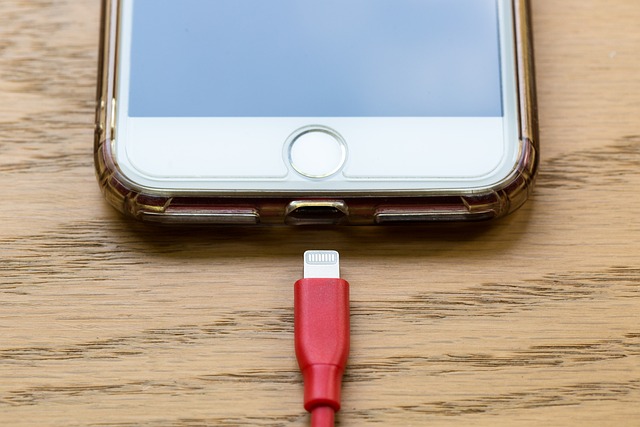When a device's battery starts to degrade, early detection and replacement of the battery are key to preventing complete failure. Users should monitor for signs such as reduced battery life, extended charging times, physical changes like swelling or bloating, unexpected reboots or shutdowns, and a loss of power efficiency. These symptoms can lead to potential data loss and reduce the device's lifespan. As batteries age, they naturally lose capacity, which manifests as a shorter charge duration and faster drain rates. Regularly replacing the battery ensures optimal device functionality and avoids complications from an unstable power source, safeguarding performance and longevity. Immediate attention is necessary if the battery shows unusual swelling or bulging, as this can pose serious safety risks. Recurrent abrupt shutdowns may also indicate degradation, while prolonged unresponsiveness upon starting in the morning suggests the battery's capacity is waning and a replacement is due. Keeping an eye on these indicators helps maintain device reliability and functionality, and a timely replace battery can be the solution to restore performance and extend your device's life.
When your device’s performance starts to falter, it may be time to consider replacing the battery. This article outlines five clear indicators that signal the end of your current battery’s lifecycle. From recognizing reduced capacity and unexplained physical changes to noting frequent power surges and sluggish startups, understanding these signs can help you decide when it’s most advantageous to replace your battery. Don’t let your gadget’s memory issues leave you scratching your head; learn the subtle cues that herald the need for a new battery and keep your electronic companion running smoothly.
- Recognizing the Red Flags: Understanding When to Replace Your Battery
- Declining Capacity: Signs of Diminishing Hold on Charge
- Unusual Swelling or Bulging: A Physical Indicator of Battery Stress
- Frequent Power Surges and Unexpected Shutdowns: The Dance of Instability
- Sluggish Performance: When Your Device Struggles to Start the Day
- Persistent Memory Issues: Why Your Gadget Won't Remember Recent Charges
Recognizing the Red Flags: Understanding When to Replace Your Battery

When your device starts to exhibit signs of a failing battery, it’s crucial to identify these early indicators to prevent complete failure. A diminishing battery performance can manifest in various ways. One of the most apparent is a noticeable reduction in the device’s ability to hold a charge. If your gadget previously lasted two days on a single charge and now requires daily recharging, this could be a red flag that your battery’s capacity is waning. Another sign is an increase in charging time without a corresponding increase in usage. If it takes significantly longer to charge your device than it used to, or if it doesn’t hold that charge as effectively, it may be nearing the end of its lifespan. Additionally, keep an eye on any irregularities during operation, such as unusual swelling or bloating of the battery casing, which can indicate internal damage and a need for replacement. Lastly, consistent reboots or shutdowns without apparent cause are often a sign that the battery is struggling to deliver the necessary power to run your device efficiently. When these signs appear, it’s advisable to consider replacing your battery to maintain optimal performance and ensure the longevity of your device. Regular monitoring and timely replacement of batteries can save you from potential data loss and extend the overall lifespan of your electronic equipment.
Declining Capacity: Signs of Diminishing Hold on Charge

As batteries age, their ability to hold a charge diminishes. This reduction in capacity is a natural occurrence over time and with usage. To determine if your battery requires replacement soon, monitor its performance closely. One of the clearest indicators is if your device no longer holds a charge as long as it used to, or if it drains significantly faster than before. This decline in capacity can manifest as your device losing power more rapidly during normal use or failing to maintain a full charge for extended periods. Additionally, you may notice that the battery does not retain its maximum capacity after being fully charged; it may only reach 80% or 90% of its expected capacity instead of 100%. These signs are strong indicators that a battery’s lifespan is nearing its end, and a replacement might be necessary to ensure optimal performance and longevity for your electronic device. Replacing the battery when these issues become apparent can prevent further deterioration in performance and potential damage to other components of the device due to an unstable power supply.
Unusual Swelling or Bulging: A Physical Indicator of Battery Stress

If your device is exhibiting an unusual swelling or bulging, particularly in the area where the battery is housed, this is a clear physical indicator that your battery is under significant stress and may soon require replacement. This phenomenon occurs due to the chemical reactions within the battery cells, which can lead to expansion if the battery is overcharged, damaged, or of poor quality. Over time, this expansion can compromise the integrity of the device’s structure, potentially leading to a rupture or short-circuit that could cause a fire or explosion. It’s imperative to address this issue promptly by replacing the battery to ensure both the safety and functionality of your electronic device. Regularly inspecting your device for such signs and replacing the battery as needed can prevent more severe complications and maintain optimal performance. If you notice any swelling, do not attempt to open or manipulate the battery yourself; instead, seek professional assistance immediately to avoid any risks associated with handling damaged batteries.
Frequent Power Surges and Unexpected Shutdowns: The Dance of Instability

If your device has recently developed a penchant for dramatic power surges followed by unexpected shutdowns, it might be signaling that its battery is on its last legs. These occurrences are not just random glitches but often indicative of a battery’s diminishing capacity to hold and supply energy. As the battery ages, its ability to maintain a stable charge wanes, leading to these unpredictable surges and shutdowns—a dance of instability that can disrupt your daily activities. Over time, the chemistry within the battery changes, and its cells may not communicate as effectively with the device’s charging circuitry. This miscommunication can result in a rapid influx of current or an abrupt halt to power delivery without warning. To prevent data loss or damage to your device, it’s advisable to replace the battery when such behaviors become frequent. Regular battery replacement by certified professionals can ensure your devices operate efficiently and safely, preserving their longevity and performance.
Sluggish Performance: When Your Device Struggles to Start the Day

If your device is displaying signs of lethargy in the morning, it might be an indication that your battery is nearing the end of its lifecycle. When you power up your gadget and notice it takes an unusually long time to respond or activate, this can point to battery degradation. Over time, batteries naturally lose their ability to hold a charge as effectively as when new. This sluggish performance in the early hours is often one of the first symptoms that your battery needs replacement. Regular users may notice that their device’s once swift startup process becomes a slow and deliberate affair, which can be remedied by putting your phone or laptop on charge overnight. However, if this behavior persists even after a full charge, it’s a clear sign that the battery’s capacity to store energy is diminishing. To maintain optimal performance and prolong the lifespan of your device, considering a battery replacement is advisable when you encounter persistent sluggishness upon awakening from standby mode.
Persistent Memory Issues: Why Your Gadget Won't Remember Recent Charges

If your gadget has recently developed a habit of forgetting its last charge, it might be an early sign that your battery is on its way out and a replacement may soon be in order. Lithium-ion batteries, common in smartphones, laptops, and other portable electronics, have a finite number of charge cycles before they begin to lose their ability to hold a charge effectively. This phenomenon manifests as persistent memory issues, where the device fails to recall how fully it was previously charged. Over time, the battery’s capacity diminishes, and it may not power your gadget for as long as it once did, leading to frequent recharging that seems to reset the battery meter. To address this, regularly checking your battery health through your device’s settings can provide insight into its condition. If you notice a consistent pattern of reduced performance or a significant drop in battery life after charges, it may be time to consider a replace battery with a new one. This will not only restore the reliability of your gadget but also prolong its overall functionality and ensure that you’re not left stranded by a dead battery at an inopportune moment. Keep an eye on these early warning signs, as they are key indicators that your battery’s lifespan is coming to an end, and a replacement will likely become necessary.
When a battery shows signs of distress, it’s crucial to act promptly to prevent device malfunction or data loss. The article has outlined five clear indicators that it’s time to consider replacing your battery. These include declining capacity, unusual swelling, frequent power surges and unexpected shutdowns, sluggish performance upon awakening, and persistent memory issues post-charge. Recognizing these red flags early can save your gadget from further stress and ensure its longevity and optimal performance. If you’ve identified any of these issues, it’s advisable to replace your battery to maintain the reliability and efficiency of your device. Remember, a proactive approach in addressing battery health is key to safeguarding your technology investments.
